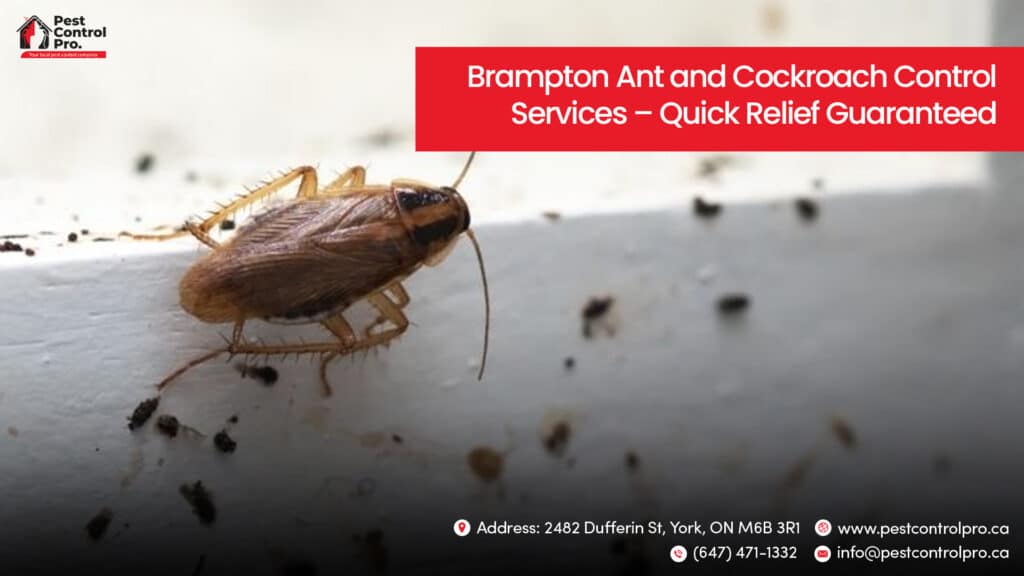When dealing with bed bug problems in Toronto, you have two main options: heat treatment and chemical solutions. Each approach has its strengths and weaknesses. Heat treatment is effective because it kills all life stages of bed bugs in just one day, and it’s an environmentally friendly method. On the other hand, chemical treatments can take longer to work and may leave behind residues.
Consider your unique situation carefully. If you have a severe infestation, heat treatment might be the better choice for rapid results. Interestingly, bed bugs can survive for months without feeding, which makes them particularly resilient.
Let’s dive into the specifics of both methods so you can make an informed decision about what’s best for your home and peace of mind.
Understanding Bed Bugs and Their Infestations
Bed bugs are a significant concern for urban dwellers, especially in bustling cities like Toronto. These small, reddish-brown pests feed on human blood, making their presence a serious issue for many residents. They thrive in warm environments, leading to their rapid proliferation.
As you travel, you may unknowingly transport these pests in your luggage or through used furniture, contributing to the rising number of bed bug complaints throughout the city. Their nocturnal nature and ability to hide in crevices make them tough to detect, complicating the pest control process.
Health risks associated with bed bugs include allergic reactions and the potential for infections from their bites. Did you know that a single female bed bug can lay hundreds of eggs in her lifetime? This fact highlights the urgency of addressing an infestation quickly.
To effectively combat bed bugs, consider consulting with professional pest control services. They can provide chemical treatments or heat treatments tailored to your situation, while also addressing any environmental concerns.
It’s crucial to take action as soon as you suspect an infestation to protect your home and health.
Overview of Heat Treatment for Bed Bugs
Heat treatment effectively addresses bed bug infestations. This method not only kills bed bugs but also provides numerous benefits:
- Environmentally Safe: You won’t need chemical pesticides, ensuring your home remains free from harmful residues.
- Thorough Coverage: High-quality equipment ensures heat reaches deep into furniture, mattresses, and even wall voids, tackling bed bugs where they hide.
- Quick Results: Most infestations can be eliminated in just one day, allowing you to return home without the hassle of repeated visits.
- Health-Conscious: Unlike chemical treatments, heat treatment is safe for homes with children and pets.
Did you know that bed bugs can survive for several months without feeding? This makes swift action crucial in eradicating them.
As a pest control professional, I recommend heat treatment as an optimal solution for your bed bug issues.
The Effectiveness of Chemical Treatments
Chemical treatments can effectively address bed bug infestations. The success of these treatments largely depends on the products you choose and the severity of your situation.
Residual insecticides are commonly used, as they remain active for weeks, killing bed bugs over time. Fast-acting contact killers are designed to eliminate visible bed bugs quickly, while Insect Growth Regulators (IGRs) disrupt their life cycle, preventing future outbreaks.
However, keep in mind that many bed bugs have developed resistance to common pesticides. This resistance can make complete eradication challenging. Additionally, consider the health risks that chemical treatments pose, especially for children and pets. You might need to temporarily evacuate during application to ensure safety.
For optimal results, it’s often recommended to have multiple treatments tailored to the specific ingredients and the extent of your infestation. A professional pest control service can help you navigate these options effectively.
Interestingly, did you know that a single female bed bug can lay up to 500 eggs in her lifetime? This highlights the importance of addressing infestations promptly and thoroughly.
Pros and Cons of Each Treatment Method
When dealing with bed bug infestations, understanding your treatment options is crucial. Let’s break down the two primary methods: heat treatment and chemical treatments.
1. Heat Treatment: This method effectively eradicates all life stages of bed bugs in just one day. You can expect a minimal impact on the environment, making it a safe choice for your home.
Did you know that bed bugs can’t withstand temperatures above 120°F? This makes heat treatment a powerful and reliable option.
2. Chemical Treatments: These sprays can kill bed bugs on contact, but they may leave behind harmful residues. This often means you’ll need to evacuate your space during the application process, which can be inconvenient.
3. Resistance: Bed bugs are less likely to develop Resistance to heat. This means heat treatment can serve as a long-term solution compared to some chemical options that may provide diminishing results over time.
4. Timeframe: If you need quick results, heat treatment shines by delivering fast action.
On the other hand, chemical treatments can take weeks and may require multiple applications to completely eliminate the infestation.
In summary, evaluate your needs and preferences when choosing between these methods.
As a pest control pro, I recommend considering the speed and environmental impact of heat treatment for immediate relief, especially if you want to avoid the hassle of chemical residues.
Choosing the Right Solution for Your Situation
To choose the right solution for your bed bug issue, start by assessing the extent of the infestation and the specific features of your home.
If you have a severe infestation in certain areas, heat treatment could be the most effective option. This method is quick, eliminating all stages of bed bugs in just one day.
On the other hand, if you consider chemical treatments, be mindful that they typically require multiple applications and may pose health risks to you and your pets.
It’s crucial to consult with professional exterminators. They can guide you on the environmental effects of your choices and help you adopt integrated pest management strategies for thorough control.
Fun fact: Bed bugs can survive for several months without feeding.
So, it’s important to act quickly to prevent the situation from worsening.
Let’s work together to make an informed decision tailored to your unique circumstances.
Frequently Asked Questions
Is Heat Treatment Better Than Chemical Treatment for Bed Bugs?
Heat treatment is indeed better than chemical treatment for bed bugs. It kills all life stages of these pests, from eggs to adults. Moreover, heat treatment is safer for your home and the environment. Unlike chemicals, it doesn’t leave harmful residues.
As a pest control pro, I recommend heat treatment for its effectiveness and long-term results. Did you know that bed bugs can survive for months without feeding? This resilience makes thorough extermination crucial.
What Is the Most Effective Treatment Against Bed Bugs?
The most effective treatment against bed bugs combines eco-friendly solutions with professional extermination. As a pest control pro, I recommend using monitoring traps to identify infestations early. You can also implement DIY strategies, such as using heat treatment, which involves washing infested items in hot water and drying them on high heat.
Consider researching various pest control methods to find the best fit for your situation. For long-term prevention, sealing cracks and crevices in your home can help keep these pesky insects at bay. Interestingly, did you know that a female bed bug can lay up to 500 eggs in her lifetime? This fact highlights the importance of swift action in dealing with infestations.
Don’t forget to evaluate treatment costs while planning your approach. By combining these strategies, you can effectively manage and prevent future bed bug encounters.
Are Bed Bugs Still Alive After Heat Treatment?
Heat treatment effectively eliminates bed bugs, and about 90% of them do not survive this method. When done correctly, this process targets all life stages of the pests. As a pest control professional, I can assure you that proper heat exposure, coupled with proven techniques, significantly reduces the chances of re-infestation.
Interestingly, bed bugs can withstand a range of conditions, but they cannot survive temperatures above 120°F for an extended period. Many satisfied customers have shared their positive experiences, highlighting the safety and cost-effectiveness of this approach. If you’re dealing with a bed bug issue, heat treatment is a reliable solution worth considering.
What Is the Success Rate of Chemical Treatment for Bed Bugs?
The success rate of chemical treatments for bed bugs varies. Pesticide resistance is a significant challenge, meaning some bed bugs may survive treatments. You should expect multiple applications to be necessary, which can increase the risk of re-infestation. Also, safety concerns regarding chemical exposure for both humans and pets come into play.
When you look at the environmental impact, it adds another layer of complexity. Cost is also a factor; while initial treatments might seem affordable, follow-up treatments can drive up expenses over time.
Interestingly, studies have shown that some bed bug populations have developed resistance to common pesticides, making it critical to choose effective products. As a pest control professional, I recommend a comprehensive approach that includes both chemical and non-chemical methods for the best results. Regular follow-ups are key to ensuring that your home remains bed bug-free.



